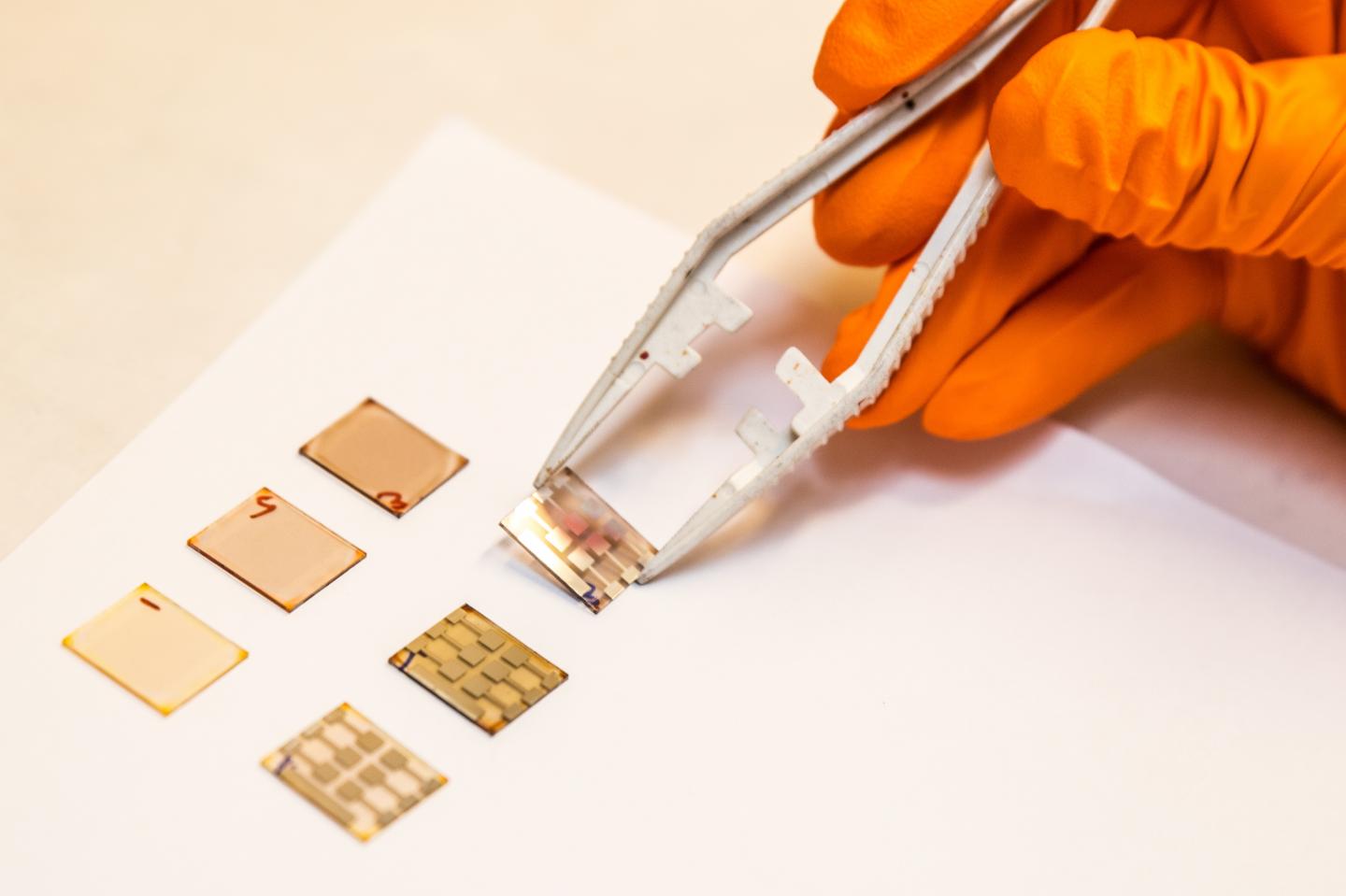Unveiling the synergistic effect of precursor stoichiometry and interfacial reactions for perovskite light-emitting diodes

Credit: Charlotte Perhammar
Scientists at Linkoping University working with colleagues from China have shown how to achieve efficient perovskite light-emitting diodes (LEDs). In an article published in Nature Communications, they provide guidelines on fabricating high-quality perovskite light emitters, and consequently high-efficiency perovskite LEDs.
The halide perovskites, which are defined by their crystal structures, can be easily prepared by low-cost solution processing from precursor solution comprising metal halides and organic halides. The resulting perovskites possess excellent optical and electrical properties, making them promising candidates for various kinds of optoelectronic devices, such as solar cells, LEDs and photodetectors.
Since solution-processed perovskites contain large amounts of defects, which are mostly halide vacancies, efficient control of the perovskite crystallinity is required for high-performance optoelectronic devices. The research group at LiU, under the leadership of Senior Lecturer Feng Gao, in collaboration with scientists from Nanjing Tech University, and Soochow University in China, has now studied how the precursor components and the interfaces affect the crystallisation process of perovskites.
“We and several other groups found that simply introducing an extra amount of organic halides in the precursor can help to passivate the defects and achieve highly emissive perovskite films” says Zhongcheng Yuan, PhD student in Department of Physics, Chemistry and Biology (IFM) at LiU, who is the first author of the article. The excess organic halides, however, hamper the perovskite crystallisation, resulting in low-conductivity perovskite emissive layers and poor-performance LEDs.
The scientists have now resolved this dilemma by supporting the perovskite crystallisation with a metal oxide, ZnO, which helps to remove a suitable number of the extra organic cations, making it possible for better crystallization. The article in Nature Communications shows how chemical reactions between different metal oxide layers and perovskite layers affect the properties of the thin films of perovskites, and consequently the performance of LEDs.
“We achieve the precise control by taking advantage of the basic nature of zinc oxide, which can selectively remove the undesired organic cations while leaving the desired halide anions”, says Sai Bai, research fellow at the Department of Physics, Chemistry and Biology (IFM) at LiU. He and Feng Gao are the principal authors of the article.
This new discovery, in combination with previous results from the same group on dealing with defects in perovskites, has allowed them to fabricate efficient perovskite light-emissive films in the laboratory. The resulting devices give near-infrared LEDs with a quantum efficiency of 19.6%, i.e. 19.6% of the electrons supplied to the device are emitted as light (photons), which is among the best performance for perovskite LEDs in the world.
“Perovskite LEDs are a promising field. Rapid breakthroughs have been witnessed during the past 5 years, but this field is still new and much more work needs to be done before they can be commercially manufactured at a large scale. One critical aspect that needs to be improved is the device stability”, says Feng Gao.
###
Among the sources of funding for the research are an ERC Starting Grant to Feng Gao, the EU’s Marie Sk?odowska-Curie Actions, and the National Key Research and Development Program of China.
Unveiling the synergistic effect of precursor stoichiometry and interfacial reactions for perovskite light-emitting diodes, Zhongcheng Yuan, Yanfeng Miao, Zhangjun Hu, Weidong Xu, Chaoyang Kuang, Kang Pan, Pinlei Liu, Jingya Lai, Baoquan Sun, Jianpu Wang, Sai Bai & Feng Gao, Nature Communications. Published online June 27, 2019, DOI 10.1038/s41467-019-10612-3
Contact: Feng Gao [email protected] +46 13 28 68 82
Sai Bai, [email protected], +46 13 28 29 18
Media Contact
Feng Gao
[email protected]
Original Source
https:/
Related Journal Article
http://dx.




